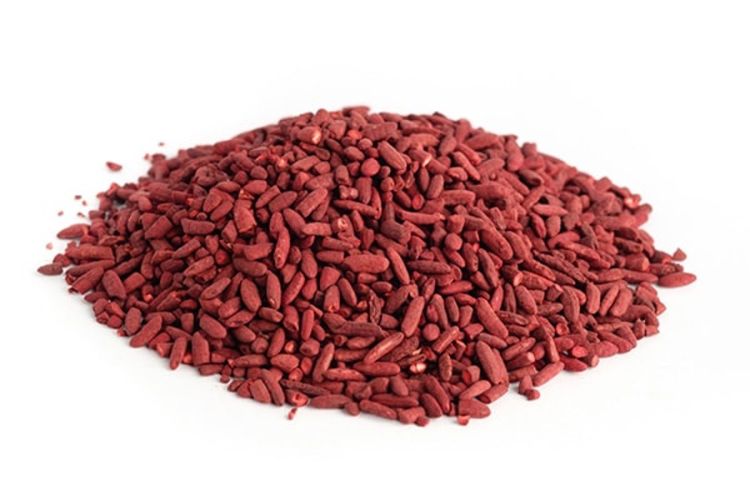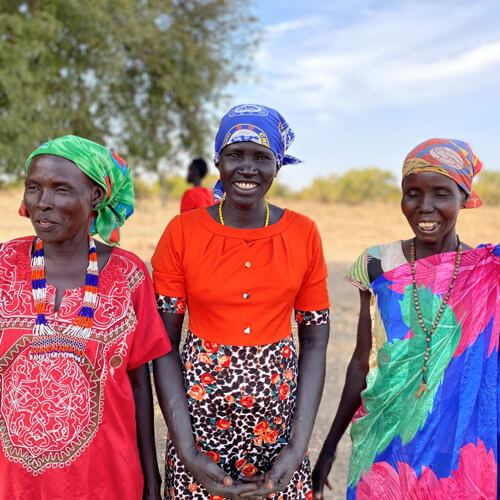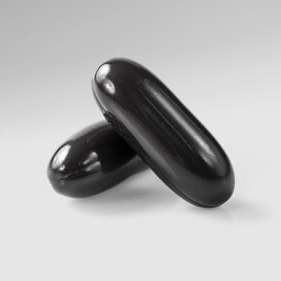BACKGROUND
Ingredient Type: Botanical, Herb
Also Known As: Cholestin, Hong Qu, Hongqu, Koji Rouge, Monascus, Monascus Purpureus Went, Red Koji, Red Rice, Red Rice Yeast, Red Yeast Rice, Red Yeast Rice Extract, Xue Zhi Kang, XZK, Zhibituo, Zhi Tai. (11)

Red Yeast Rice (Monascus purpureus) is a bright, reddish purple, fermented rice that is cultivated with a specific type of mold, which is where it gets its color. It is part of Asian diets, and in Japanese, it is referred to as “koji”. It has been used in Traditional Chinese Medicine for centuries, as far back as the Tang Dynasty in 800 AD. It was taken to aid in digestion, revitalize the blood, and invigorate the body. It is believed to contain a substance that helps support normal cholesterol levels in the body.
TRADITIONAL USES
Red Yeast Rice extract is used in health supplements today to help support normal cholesterol levels.
WHAT DOES SCIENCE TELL US?
Red Yeast Rice (RYR) This fermented rice has been used as a food and a traditional medicine in China for over 1,000 years (since 800 AD). Red yeast rice naturally contains a variety of compounds known as monacolins. Among the monacolins in RYR is a monacolin-K, also known as lovastatin. (1)
The controversy began in 1999, shortly after clinical trials first showed that RYR could significantly lower cholesterol levels. At that time the FDA ruled that RYR containing monocolin-K was a drug, and ordered it removed it from the shelves. After several lawsuits, and several back-and-forth rulings, the 10th U.S. Circuit Court of Appeals agreed with the FDA. Therefore, in the U.S., RYR can still be sold legally, but only if steps are taken in its manufacturing process to remove the monocolin-K. (1, 3, 10)
Two clinical trials show a benefit of monocolin-K free Red Yeast Rice Products:
- In 2009, a study from Pennsylvania showed that in 60 patients who had to stop taking statin drugs because of statin-induced muscle pain, taking RYR and initiating lifestyle changes for 24 weeks significantly reduced total and LDL cholesterol levels, compared to taking a placebo and making the same lifestyle changes. (2)
- In 2010, investigators from the University of Pennsylvania reported that in patients who had to stop taking statins due to muscle pain, RYR was just as effective as 20 mg per day of the statin drug pravastatin (Pravachol) in reducing cholesterol levels. (2)
Why Take RYR?
Red yeast rice may be effective in people who do not respond to prescription statins and side effects seen in patients treated only with lovastatin may be potentially be diminished because of the lower amount of lovastatin in typical dosages of red yeast rice. (1, 8, 9)
The beneficial effects come from two high levels of active compounds monascin (MS) and ankaflavin (AK). They are the yellow pigment metabolites naturally produced from fermentation. Although monacolin K is the most commonly used effective compound to regulate metabolic syndrome in history, it carries with it some side effects. However, MS and AK have no side effects and even boast better outcomes than monacolin K. (10)
What are MS and AK?
- Monascus purpureus NTU 568 secondary metabolite product — Monascin — has been shown to prevent or ameliorate hyper-cholesterolemia, hyperlipidemia, and obesity. Recently, MS has been shown to improve hyperglycemia, regulate diabetes, attenuate oxidative stress, inhibit insulin resistance, and suppress inflammatory cytokine production. Additionally, MS is a peroxisome proliferator-activated receptor-gamma (PPARγ) agonist, which up-regulates insulin sensitivity. In recent studies, researchers have found that it is effective in inhibiting hyperglycemia in AGEor MG-treated animals. (6, 10)
- Ankaflavin has been identified as a naturally occurring secondary metabolite from red yeast rice. It counteracts the symptoms of metabolic syndrome by inhibiting hyper-cholesterolemia and nonalcoholic fatty liver disease, protects against cardiovascular disease and atherosclerosis, and boasts anti-obesity, anti-cancer, and anti-inflammatory effects in the airway. AK also positively regulates several transcription factors associated with the prevention of metabolic syndrome and other diseases, including PPARγ, PPARα, and Nrf2. Taken together, these results suggest that AK is associated with a beneficial effects profile when used by patients suffering from metabolic syndrome. (7, 10)
REFERENCES
- https://www.consumerlab.com/reviews/_/Red_Yeast_Rice/#quality
- University of Maryland Medical Center, Red Yeast Rice, www.umm.edu/health/medical/altmed/supplement/red-yeast-rice
- National Institutes of Health, National Center for Complementary and Integrative Health, Red Yeast Rice, nccih.nih.gov/health/red yeastrice
- Hsu, W.H. and T.M. Pan, A novel PPARgamma agonist monascin’s potential application in diabetes prevention. Food Funct, 2014. 5(7): p. 1334-40.
- Lee, B.H., et al., Monascin improves diabetes and dyslipidemia by regulating PPARgamma and inhibiting lipogenesis in fructose-rich diet-induced C57BL/6 mice. Food Funct, 2013. 4(6): p. 950-9.
- Hsu, W.H. and T.M. Pan, Treatment of metabolic syndrome with ankaflavin, a secondary metabolite isolated from the edible fungus Monascus spp. Appl Microbiol Biotechnol, 2014. 98(11): p.4853-63.
- Lee, C.L., et al., Monascin and ankaflavin have more anti-atheroscle rosis effect and less side effect involving increasing creatinine phosphokinase activity than monacolin K under the same dosages. J Agric Food Chem, 2013. 61(1): p. 143-50.
- Chen, C.L. and T.M. Pan, Red mold dioscorea: a potentially safe traditional function food for the treatment of hyperlipidemia. Food Chem, 2012. 134(2): p. 1074-80.
- Chen, C.-L. and T.-M. Pan, Red mold dioscorea decreases blood pressure when adminis-tered alone or with amlodipine and is a potentially safe functional food in SHR and WKY rats. Journal of Functional Foods, 2013. 5(3): p. 1456-1465.
- https://www.naturalproductsinsider.com/~/media/Files/Nutrition/Whitepapers/2017/06/SunWayWhitePaper.pdf?cmpid=SUNWAYWP_button7-10
- www.naturalmedicines.com
See the National Center for Complementary and Integrative Health entry for red yeast rice, the Penn State Hershey Health Information Library entry for red yeast rice, the Mayo Clinic entry for red yeast rice, the Examine.com entry for red yeast rice, or the RXList entry for red yeast rice for more information.









